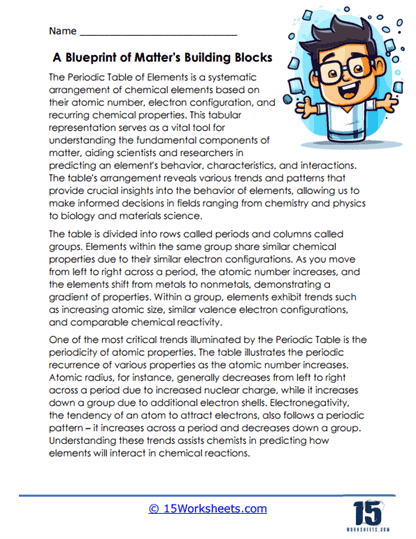A Blueprint of Matter’s Building Blocks

Worksheet Description
The worksheet looks into the foundational aspects of the Periodic Table of Elements. It describes the systematic arrangement of chemical elements based on various criteria such as atomic number, electron configuration, and recurring chemical properties. The table’s structure, divided into rows and columns known as periods and groups, is also highlighted. The worksheet underscores the importance of the Periodic Table in predicting an element’s behavior, characteristics, and interactions.
To grasp the concepts detailed in the worksheet, students should begin by understanding the foundational principles of atomic number and electron configuration. They should then explore how these configurations influence the categorization of elements into specific periods and groups within the Periodic Table. The next step involves recognizing the patterns that emerge across periods and groups, emphasizing the periodicity of various properties. Lastly, understanding the trends, such as the change in atomic size or electronegativity across the table, can equip students to predict how different elements might react chemically.
This worksheet aims to foster a comprehensive understanding of the Periodic Table’s structure and significance. By elucidating the systematic arrangement and the reasoning behind it, students are encouraged to see the Periodic Table not merely as a list but as a tool for predicting chemical behavior. The emphasis on periodicity and trends across the table reinforces the predictable nature of elemental properties and interactions. Through this worksheet, students are being equipped with a foundational knowledge that is crucial for advanced studies in chemistry and related fields.
